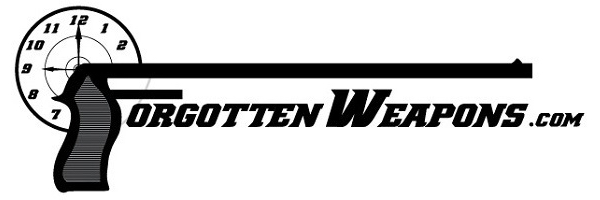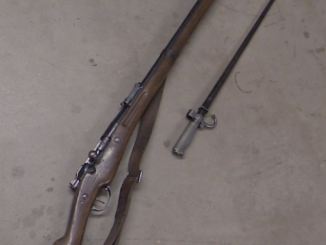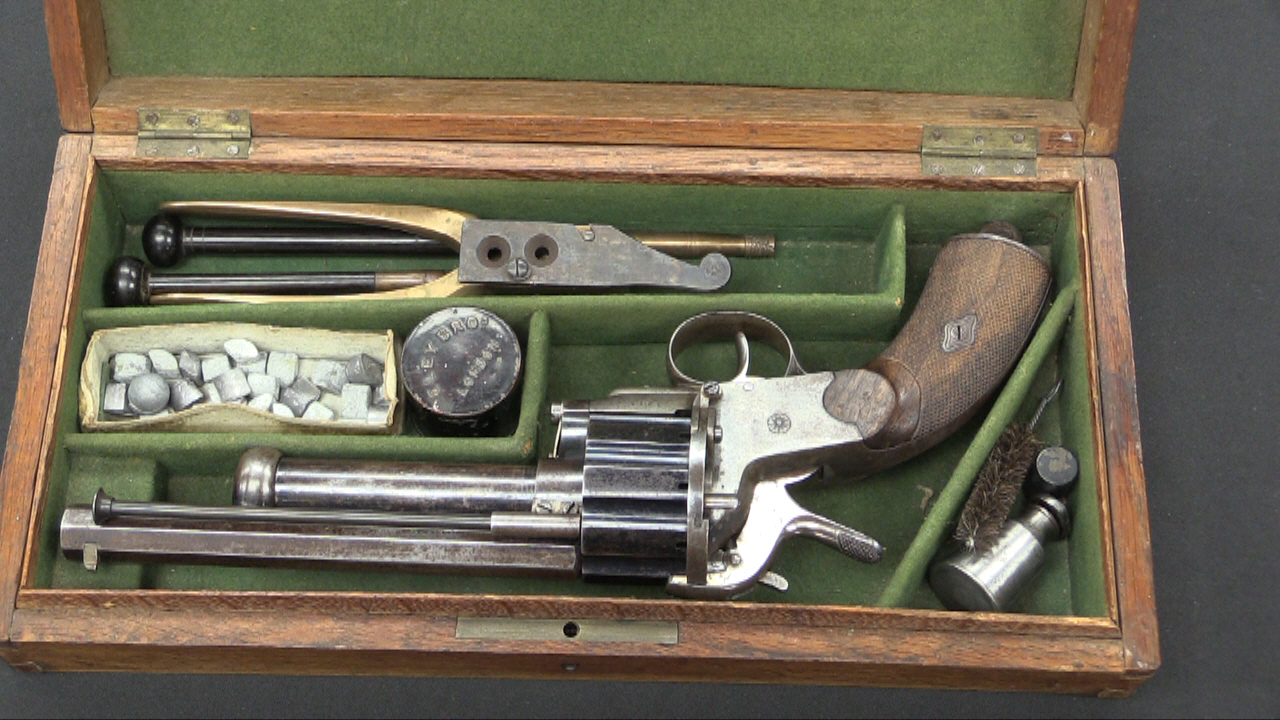Charles François Galand is best known for his simultaneous-extraction Model 1868, but he also developed a very good solid-frame revolver. This was specifically for the French 1871 military trials, which specifically required a solid frame. The Galand was chambered for 12mm Galand (with its distinctive very thick rim), held 6 rounds, operated in either single or double action, required no tools to disassemble, and had very simple but durable lockwork. The gun was very good, and was a very tight competitor for the other trials finalist, the Chamelot-Delvigne. Ultimately, it lost out because it was the more expensive of the two options.
For more information on the Model 1873 Chamelot-Delvigne that won the French trials, I suggest the C&Rsenal video on that model:




The major “selling point” of the Mdl 1873 was that it operated almost exactly like the previous Lefaucheaux Mdl 1858. The only major differences being (1) it was centerfire instead of pinfire, (2) it had a solid frame with a topstrap, and (3) it was double-action.
The French Navy already had the Lefaucheux Mdl 1870, double-action, centerfire, solid-framed and rod-ejecting, having beaten the Army to changing over by three years. So they weren’t really interested, either.
To make up any shortages, they simply converted their Lefaucheux Mdl 1858 single-action pinfire revolvers to centerfire and double action. Hence the Pistolet-revolver de Marine transforme’ 1870.
clear ether
eon
It was a “tight” competitor against the Chamelot-Delvigne.That implies it was slightly less preferable. So what is the real reason the Galand was not chosen? Cost, as the title hints? Or coming in a close second in performance tests, as the quoted sentence suggests?
The interesting thing, to me about all these European revolvers is how little-known they all are here in the US… If you grew up as I did, there weren’t any books and nobody wrote anything about them in the gun magazines of the time. About all I knew from anything I saw were the classic Webley revolvers, mostly top-break, which they’d show in movies. You would think, from what I was exposed to, that the US was where it was all at, and that Europe was a backwater for revolver design and development…
Not that anyone really talked about revolver history all that much…
Over on C&Rsenal, Othais has done sterling work showing all the interconnections and how much actual development took place in Europe. Which puts paid to the lie-by-omission that Europe was the backwater while the US developed everything for them to copy. In truth, I’d have to say that while there may have been rather more production here in the US of some models, the Europeans did enough development and the rest to say that perhaps the US was the backwater…
Fascinating to observe, really. It’s sorta depressing to realize how constrained one’s sources really were, back in the old days. Also, what you could miss if you weren’t deliberately looking for something. I’m sure that if I’d wandered into the right part of the library stacks, and found the right source, I could have gone down a rabbit hole and learned some things. Unfortunately, I never made that connection. Glad I can, these days.
It really, really doesn’t help that the vast majority of work in europe was done by an absolutely baroque labyrinth of small-to medium craft shops that were constantly copying and licensing from each other and patenting things in different countries at different times. Watching the C&Rsenal videos you can tell Othias is kinda losing his goddamn mind trying to unravel this ball of yarn, and that’s with modern research aids
An important part of Othais’ videos is his explanation of the difference of American revolvers: range. Europeans usually bought revolvers for short-range use; more powerful meant bigger bullets all the way up to .577, not higher velocity. So the barrels and cylinders are short. Americans in the Wild West practically treated big revolvers as carbines (with ammo that could be used in both). I imagine that a double-action trigger is much heavier when it has to turn a cylinder loaded with 6 rounds of black powder .45 Colt. And when you’re shooting at something over 100 feet away you usually have more time to cock the hammer than when you’re being charged by a Zulu.
There were indeed different attitudes toward revolvers in America vs. Europe.
First of all, European service-type revolvers were intended for military officers. They were more of a badge of rank than a defensive arm. Remember, the officer’s job was to supervise the riflemen, not get involved in combat personally. In fact, the revolver was seen more as an adjunct to the sword than anything else. If the officer fired a round or two at a savage at close range, that often garnered a Mention in Despatches due to it being unusual.
Secondly, the officer’s main defense was…the riflemen. To get to the officer, the enemy had to first somehow not get perforated by a company of men with single-shot rifles of .45 to .58 caliber, firing by the numbers. It’s Kirk’s “Organic Machine Gun” in action.
The American experience and expectations were fundamentally different. Here, the sidearm would likely be the means of defense for a lone individual, either without or with a rifle. The tendency toward revolvers firing carbine-type rifle cartridges reflects this; one type of ammunition serving both arms, simplifying “logistics”, and if one becomes damaged, lost or otherwise unusable, the other can still use the ammunition, so it isn’t just useless “dead weight”.
The single-action revolver was preferred due to it being more reliable and less fragile, lockwork-wise, than most double-action designs available here. Also, there was accuracy to consider; most double-actions of the era had horrible trigger-pulls, some as high as 10 kg. (The Merwin-Hulbert “Pocket Army” was an especially bad offender in this department.)
In an environment where the first shot had to count because it might be the only one you got, the single-action proved to be the most efficient “launcher” for that first shot.
No, the Colt 1911 .45 automatic being a single-action was not due to lack of imagination on the part of either John Moses Browning or U.S. Army Ordnance. It was because both knew that in the operational environment they were familiar with, single-action just worked better. Note that there were two double-action pistols in the 1910 Army trials, the Knoble automatic and the Colt M1909 “New Service” revolver. The revolver was the “control sample”. The Knoble was rejected because its lockwork proved too fragile.
Even today, anyone finding themselves somewhere in “the back of beyond” could do a lot worse than choosing an American-style big-bore single-action revolver (such as a Ruger Super Blackhawk), plus a lever-action carbine (such as a Marlin, now made by Ruger), both chambering the same carbine-type cartridge, preferably the most powerful one they can handle in the revolver. (In my case, that’s the .44 Magnum.) Unless they expect to encounter a large bear or moose, or one or more of the African Big Five, the combination should get the job done.
For anything “heavier”, I would suggest starting with a .458 Winchester Magnum and going “up” from there.
clear ether
eon
Can’t argue with any of that.
It will be noted that European cavalry had a very consistent bias towards edged weapons and mounted combat. The US, on the other hand? Huge bias towards pistols in mounted combat, and mostly “dragoon”-style cavalry warfare in general. There’s memoir out there somewhere, one written by a British cavalry trooper who fought in India and the United States as a cavalryman on the frontier. He was initially dismissive of US practice, but then realized that it worked for the style of warfare found on the frontier, along with the sort of man who became a cavalryman here in the US. You simply did not have the time, the material, or the sort of opponent that pure lancer/sabre combat would work against. In all likelihood, a mounted lancer charge against the usual run of High Plains indian tribal types would result in exhausted horses and dead men before they ever “stuck” a tribesman. It wasn’t the same as in India or any of the other colonial theaters, and it sure as hell wasn’t the same as Europe.
US cavalry was more “dragoons” than they were true cavalry, and that’s a fact. They armed themselves accordingly.
Horses for courses, literally.
Some older analyses of Native American tactics are illuminating. Like this one;
Firearms in the Indian Wars 1862 to 1891
Don Rickey Jr. University of KY 1950
It’s not online anymore, but the gist is as follows.
1. Indians, especially the Sioux, were extremely good at anti-cavalry tactics. If cavalry pursued them, they would lead them into places where they could pull preset ambushes. The primary tool of the Indian rifleman was a rifle pit and/or a slit trench in the side of a canyon or arroyo.
2. Indians were consistently better-armed than the cavalry. Mostly thanks to the Indian Bureau, which gave them Civil War surplus arms, notably Spencer repeaters, and ammunition for “hunting”. Reservation leaders immediately transferred these to the back-country “war bands”.
3. In the 1870-72 time frame, substantial amounts of U.S. arms being transferred to France for their war with Prussia- never got to France. Close to half of the Spencers intended for the French cavalry were diverted at New York, Boston, and especially Halifax
to either the Indian Bureau (again), or at Halifax, they were switched with boxes of muzzle-loaders that went to France. (Inspectors there apparently would take the lids off and look inside- and not understand the difference in appearance between a Spencer and an Enfield.)
Those diverted at Halifax went west by rail, to the “traders” who came across the border from Manitoba, Saskatchewan, and Alberta to sell them to the war bands.
As to who, how, and why, the best guess would be the “monied interests” in the East. Yes, the Rockefellers & Co. They regarded the “settlement program” as an affront to the natural order of things; “peasants” should not own land. And they controlled the Indian Bureau, which was under the Department of the Interior, not the War Department.
The math was simple. Arm the Indians, and they “got rid of” the settlers. The Army “got rid of” the Indians, but was badly weakened in doing so, again due to the Indians’ arms.
Then as the railroads moved West, their “private armies” made sure that the land claims of their employers were “respected”.
It pretty much worked.
The history of the American frontier was a lot more convoluted than the Hollywood version.
clear ether
eon
Colt Walker = Horse Killer and then a Carbine with the Dragoon. Basis for military handgun development until the U.S. went with the 9MM. M-1 Carbine was a supposed replacement for the Colt Automatic, but pistols are still around.
Sources for the claims about the Spencers, Rickefellows and the Indian Bureau.
The Rickey thesis cited. He goes into considerable detail on the Indian Bureau and others’ “facilitating” the continued activities of the war bands, literally right up to Wounded Knee. there was considerably animosity between the War Department and the Indian Bureau (Later the Bureau of Indian Affairs) as a result, that lasted into the 20th Century.
Rickey’s sources, listed in the bibliography, were mainly official reports (more like complaints) filed by successive Secretaries of war, plus the minutes of Senate hearings that mostly consisted of IB/BIA officials repeatedly saying “I have no knowledge of that”.
Something we are still familiar with today.
cheers
eon
I’ve also heard the story about guns headed for France during the franco-prussian war being diverted and muzzle-loaders shipped instead, though the story as I heard it had the guns going to South America, Chile I think, courtesy of a dealer who’d sold the same lot to three customers, for what that’s worth
Absent the actual documentation and evidence, I’d take any of those stories with a large sack of salt.
Biggest problem we had with the various Indian tribes out in the West was that they simply did not want to get with the program, and, well… Any virtually stone-age culture suddenly faced with living next door to people who’re embracing the Industrial Revolution?
Yeah; you’re gonna get steamrollered. My take on the whole thing isn’t that it’s a tragedy, but just that it’s an inevitability. Could it have been managed better, on both sides…? Probably. Likely? Oh, hell no. It just wasn’t on.
Sucks, but when you allow your “youth” to go out raiding settlers, don’t be real surprised when they conduct industrialized warfare on you in return. A lot of people simply do not get that the various tribes here in the West were a lot like modern-day gang-bangers, only exponentially worse. You get raided once, see some of the casualties… You start treating the people from whence those raiders came like human cockroaches.
Modern-day sensibilities do not have a place in evaluating what happened back then. In my reading, the thing that has struck me the most is the Indians didn’t get completely wiped out and erased. Some of the tribes flatly deserved it, like much of the Comanche.
Don’t transpose today’s morals to yesterday. Doesn’t work; you weren’t there, you didn’t live through the years before it all went down, and you do not have the sensibilities that are appropriate. The old-timers who remember the late 19th Century did, and that’s why they all had to die off before you started seeing positive or even neutral portrayals of Indians in the popular media. If you tried selling some of the crap that is accepted today, like “Dances With Wolves” to someone from the 1880s? You’d have wound up in very bad shape, likely dead.
I once read through a bunch of letters written by a German settler in the Minnesota region, who lived through that huge cluster-fark of an Indian uprising during the Civil War. His eye-witness description of those years…? Yikes. You read through that, you start to understand the whole “only good Indian a dead one” mentality, and where it came from.
Again, any primitive culture coming up against a more modern and sophisticated one? Better get their acts together, or they’re going to be filling whatever history books written about the whole thing with tragedy after tragedy. Mostly visited upon the primitives…
Excellent points about the Indian wars. Add to this Bertrand Russell’s discussion of how Anglophone victors tend to idealize those they have treated harshly in war. Dub in a musical score and you have “Dances With Wolves.” Add post-modern dyseducation and you have people calling it “history.”